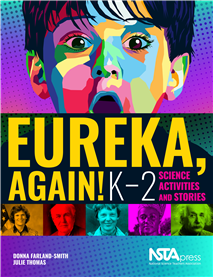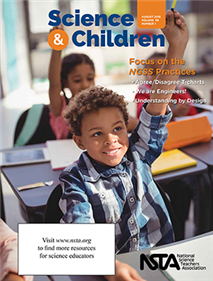All Earth & Space Science resources
NSTA Press Book
Patterns and the Plant World, Grade 1: STEM Road Map for Elementary School
What if you could challenge your first graders to relate changes in seasonal weather patterns to changes in the plant world using a container garden? With this volume in the STEM Road Map Curriculum Series, you can!...
Book Chapter
Scientists and Engineers Are CURIOUS
In this lesson, students learn that scientists and engineers are curious. They read about Mary Anning in the book The Fossil Girl: Mary Anning’s Dinosaur Discovery, by Catherine Brighton. After reading, students will learn about the history of Eart...
Journal Article
Citizen Science: Cloudy With a Chance of “Cirrus” Science
This column highlights formal and informal science research projects that students can join and contribute to by gathering and sharing data. NASA Globe Observer (GO) Clouds is a citizen science project that combines cloud and sky observations from t...
NSTA Press Book
Instructional Sequence Matters, Grades 6–8: Structuring Lessons With the NGSS in Mind
Instructional Sequence Matters shows how to make simple shifts in the way you arrange and combine activities to improve student learning. It also makes it easy for you to put the NGSS into practice. After explaining why sequencing is so important, au...
By Patrick Brown
Blog Post
First-Graders Modeling Day and Night: Making Sense of a Phenomenon
As a first-grade teacher in Detroit with predominantly Latinx students and English language learners, I worked for several weeks at the end of last school year with a doctoral candidate in science education and former elementary teacher, Christa Have...
By Cindy Workosky
Journal Article
The Early Years: Making Sense of Their World
This column discusses resources and science topics related to students in grades preK to 2. In this issue students document the apparent movement of the Sun by making and recording two daily observations for a period of time and looking for a patter...
Journal Article
Formative Assessment Probes: Is a Brick a Rock?
This column focuses on promoting learning through assessment. This issue explores a probe about lines of agreement with opposing views....
Journal Article
Engineering Encounters: How Can We Store Water During a Drought?
This column presents ideas and techniques to enhance your science teaching. This issue shares information about a sustainability engineering design problem for fourth graders....
Blog Post
What Does 3-Dimensional Space Look Like
When transitioning my classroom instruction to three dimensional learning, I decided to start with one or two areas in each unit or lesson set where I felt the most need. I was already purposeful in selecting activities that I carefully sequenced to ...
By Korei Martin





